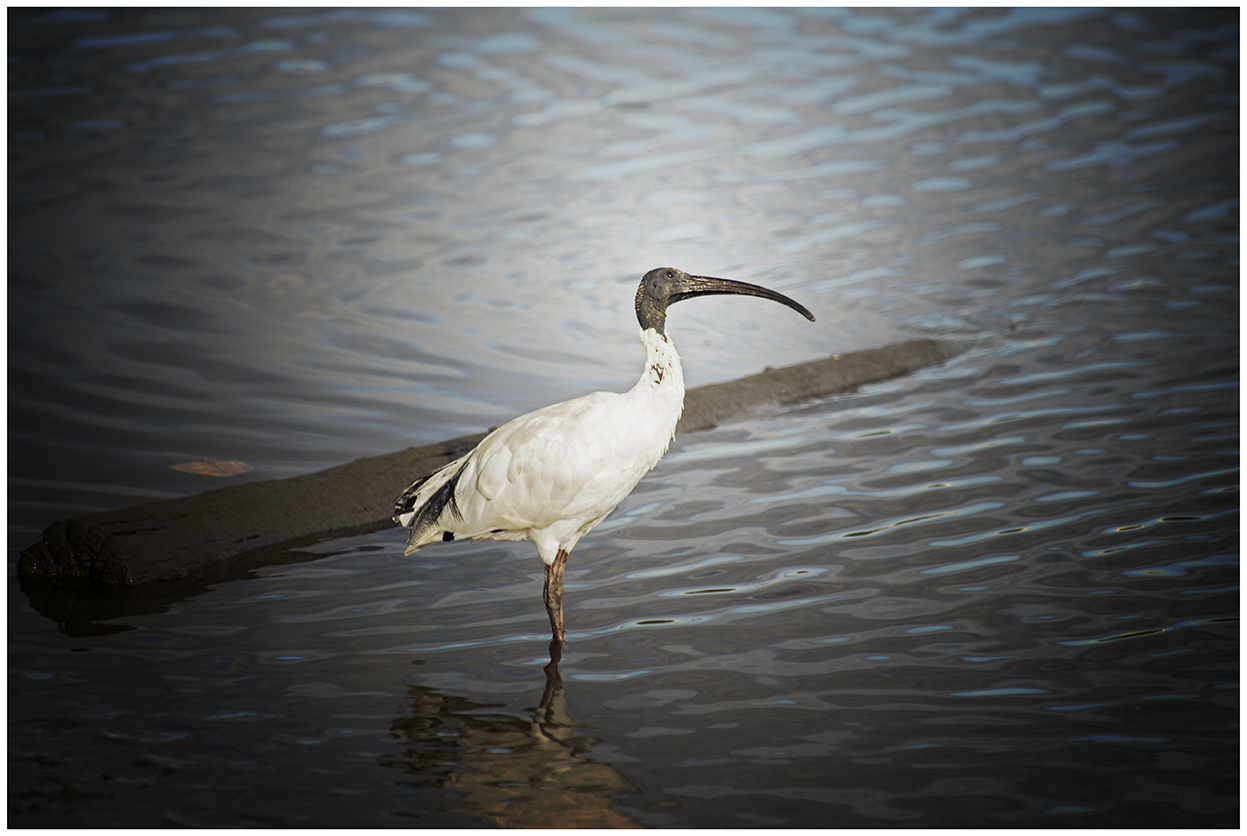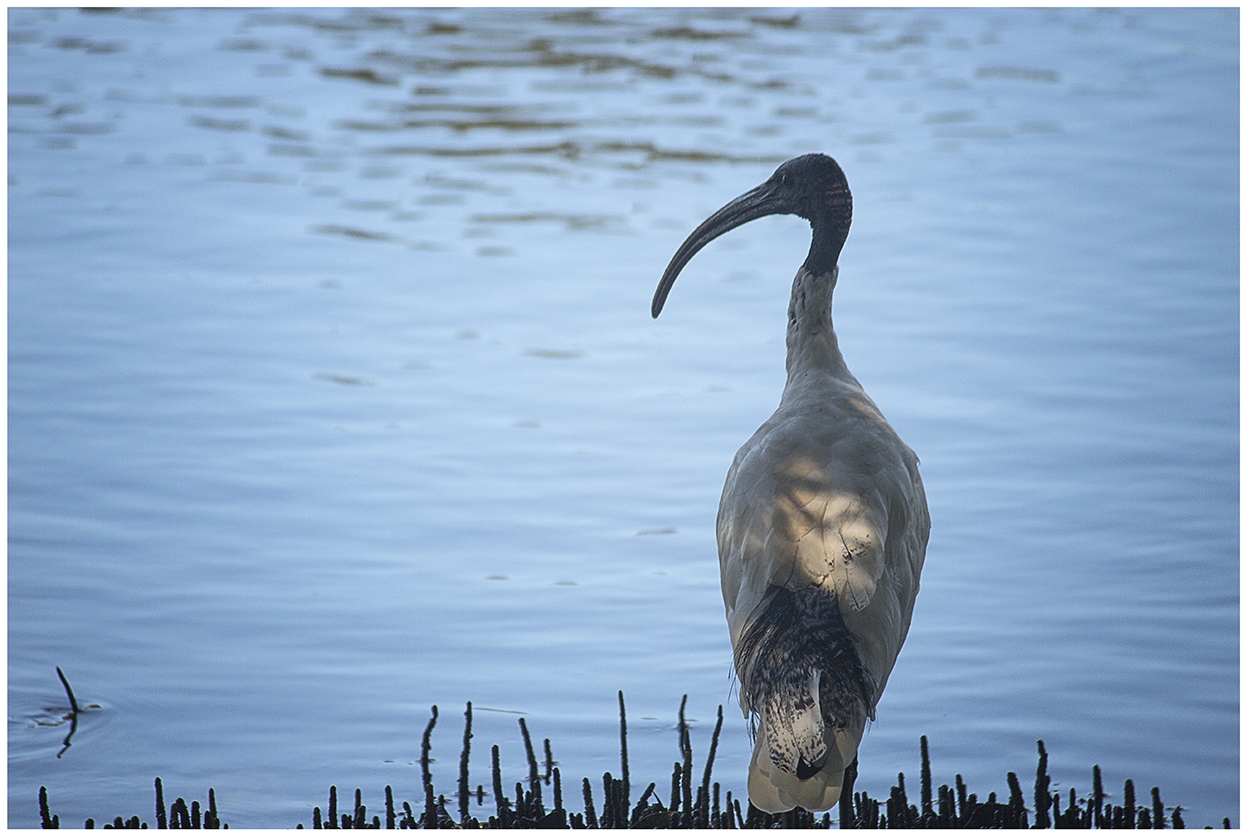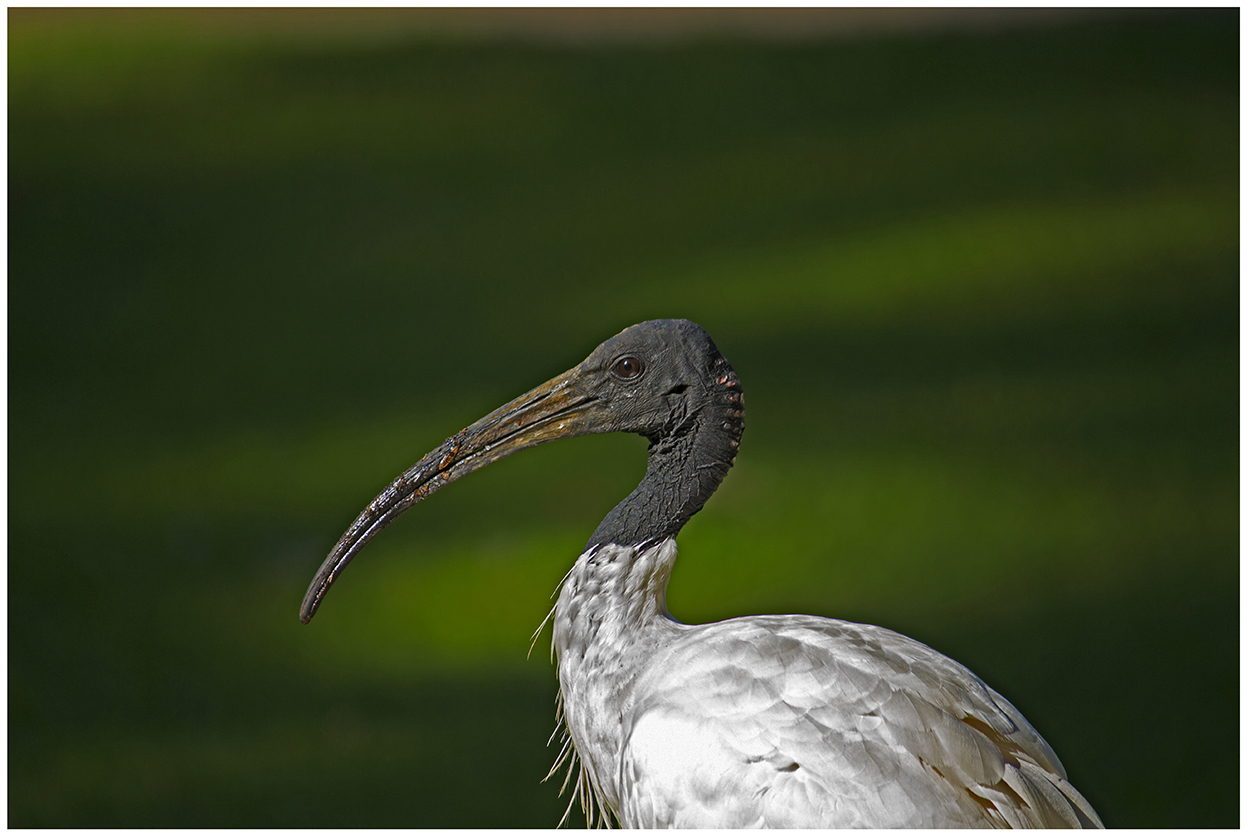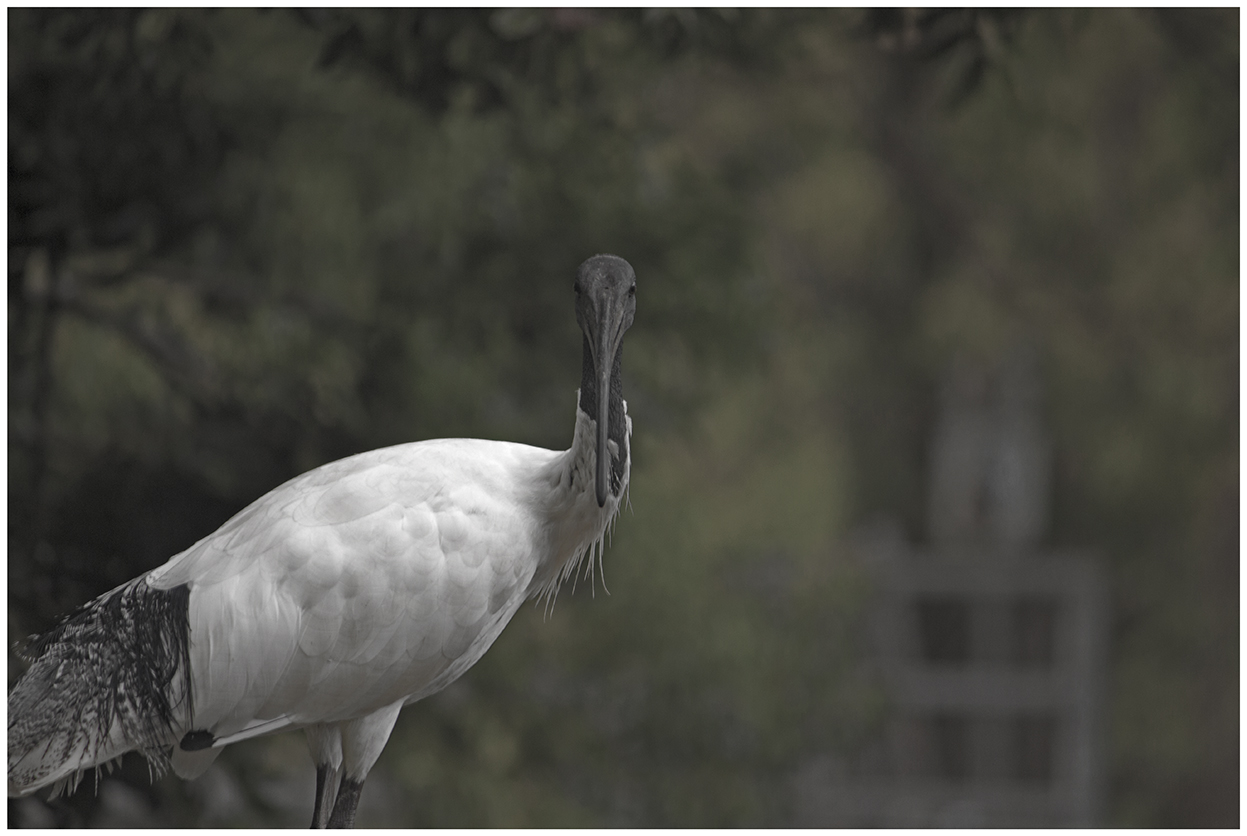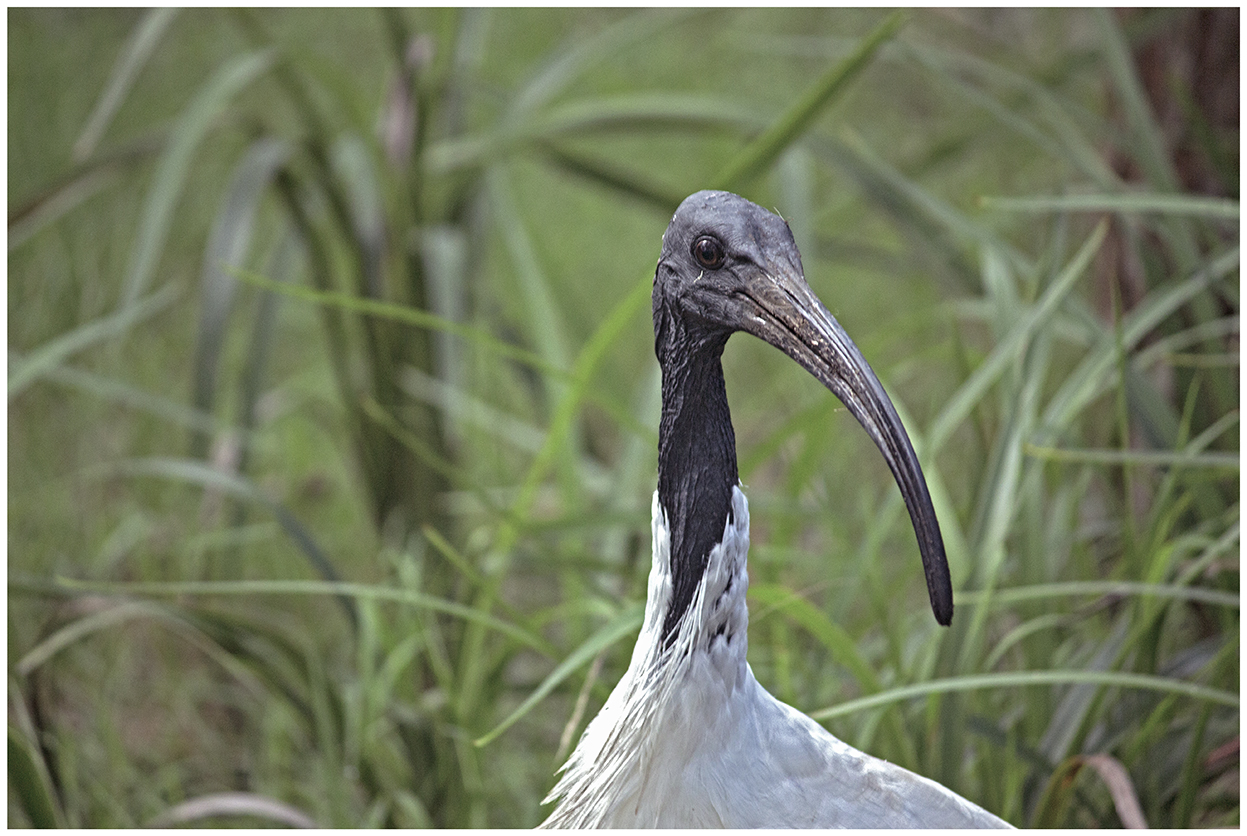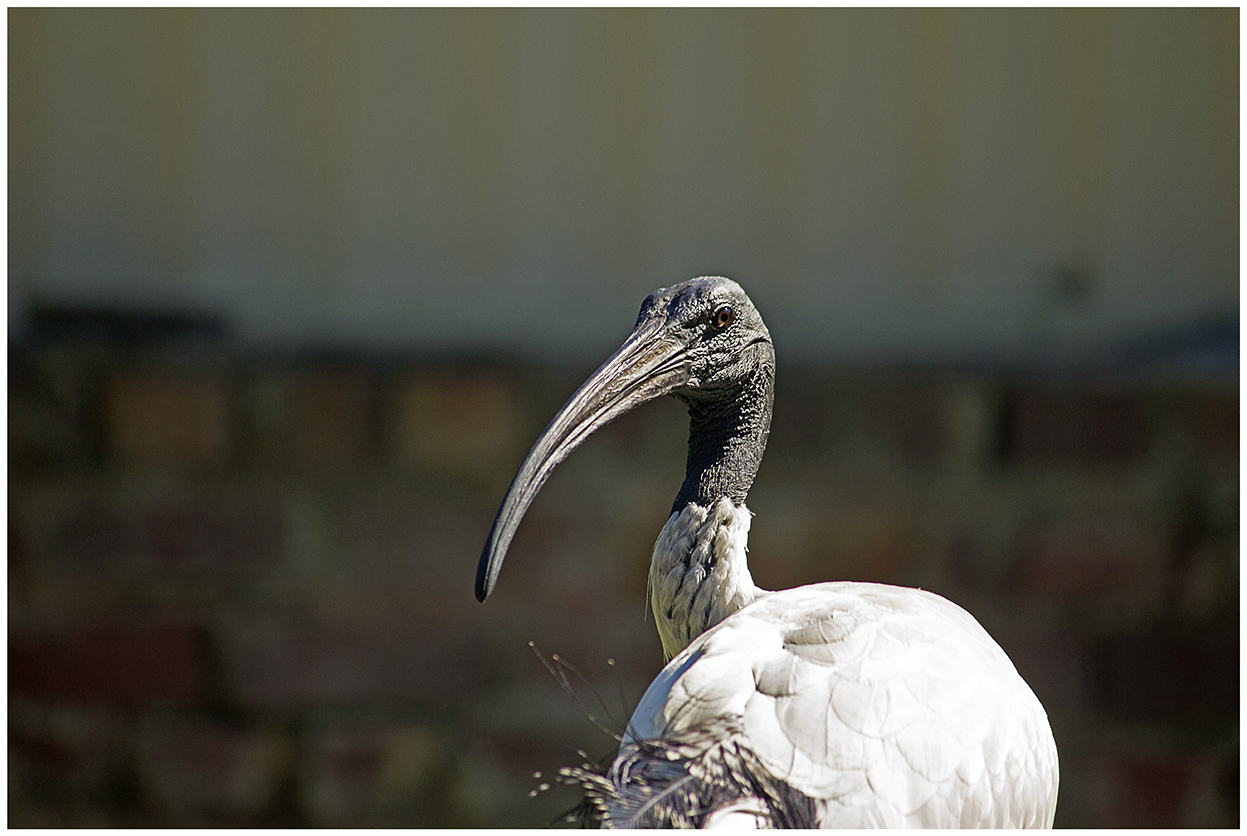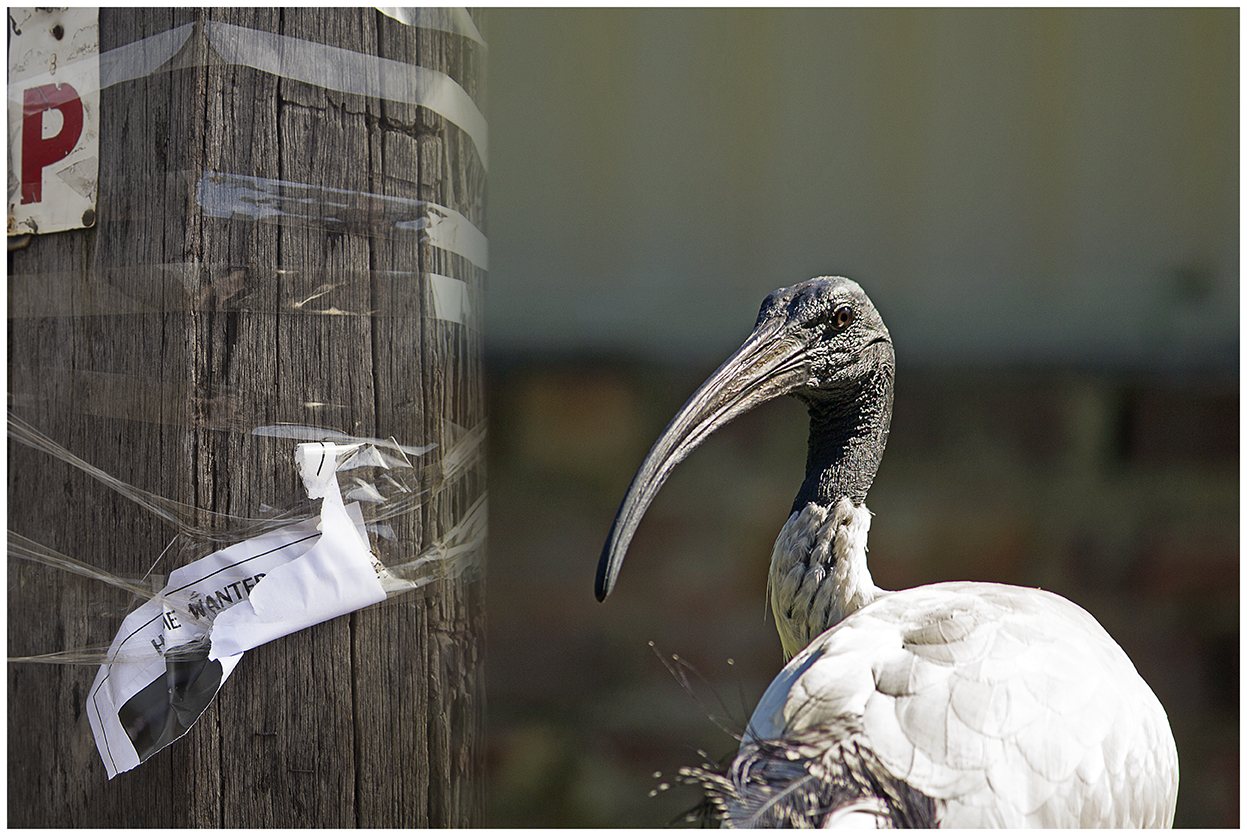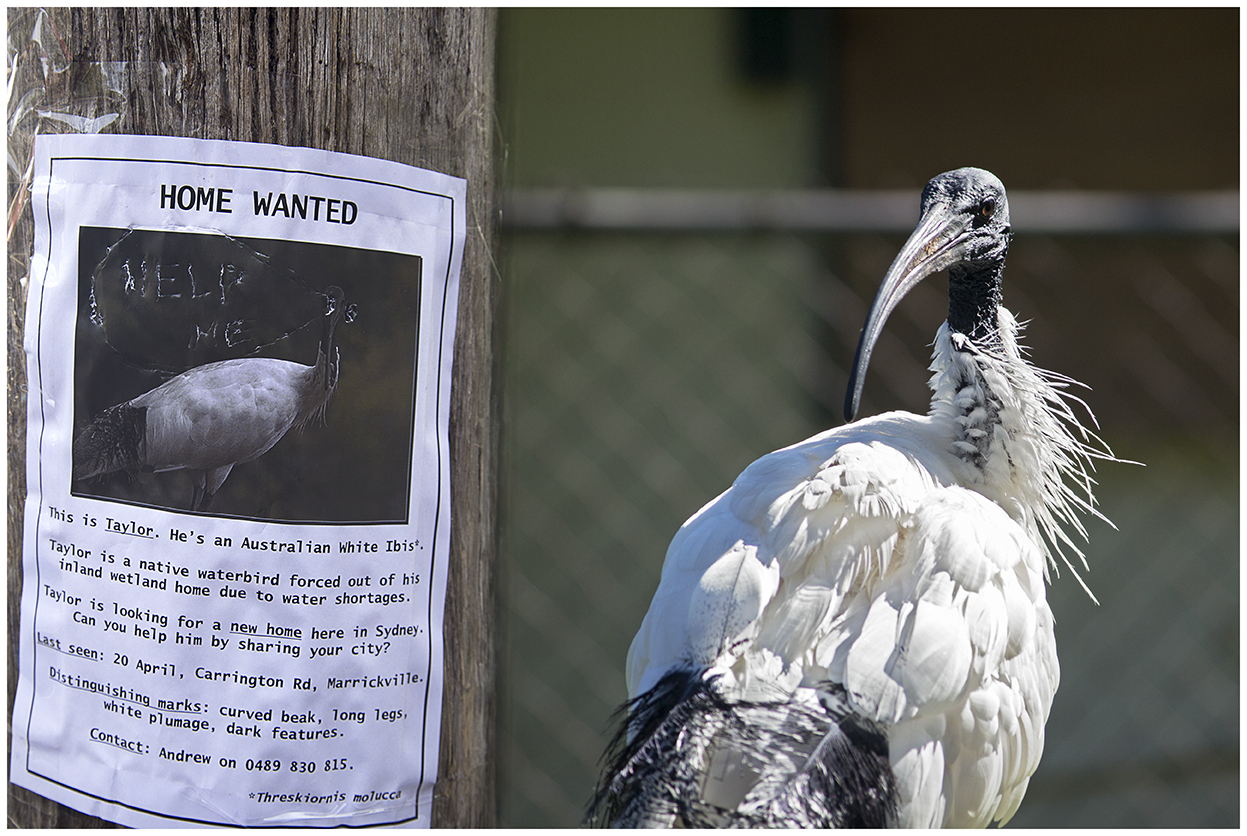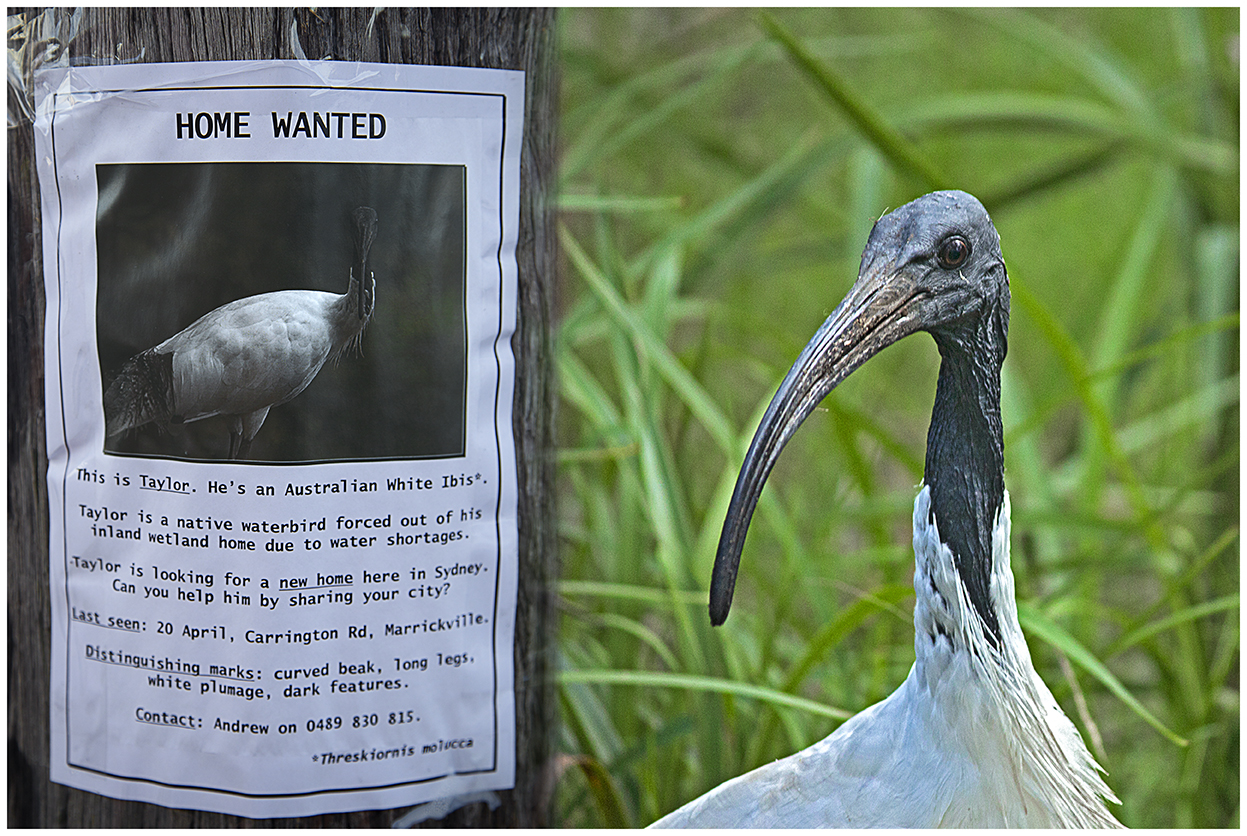Ibis Portraits: Towards Ecologies of Belonging, 2014
© Andrew Gorman-Murray
Digital photographs; inkjet print on rice paper, 29.3cm x 43.9cm
These are portraits of the Australian White Ibis (Threskiornis molucca), taken at colonies along the Cook’s River, Sydney. The Australian White Ibis is a native waterbird, whose traditional habitat is inland wetlands, such as the Macquarie Marshes. Due to persistent drought and environmental change in these habitats, these birds have established large colonies across Sydney over the last thirty years. The Australian White Ibis has become a city-dweller, a figure of urban nature. ‘Urban nature’ foregrounds the interpenetration of natural and cultural systems. Does the Australian White Ibis have a right to the city? How can humans and ibises better co-exist?
These ibis portraits are studies for the subsequent series The Ibis and Us: Ecologies of Belonging. That series more purposefully interrogates human-ibis relations in a context of ecological and geographical change. This background series, Ibis Portraits: Towards Ecologies of Belonging, foregrounds ecologies of ibis-wetland relations in the city, with portraits of Australian White Ibises found at wetland sites along the Cook’s River. The portraits aim to stir up speculation on human-ibis relations, by confronting human viewers with the non-human gaze of the ibis. Their eyes penetrate, asking questions about who belongs in the new ecologies of urban nature.
The Ibis and Us: Ecologies of Belonging, 2014
© Andrew Gorman-Murray
Digital photographs; inkjet print on rice paper, 38cm x 57cm
The Australian White Ibis (Threskiornis molucca) is a native waterbird, which has colonised Sydney over the last thirty years due to persistent drought in their traditional inland wetland habitats. My artwork responds to this geographical and ecological change, starting with the question: Can Sydneysiders live together with the Australian White Ibis? The artwork is a photomontage series that contemplates interspecies relations between humans and ibises. The composite images combine portraits of ibises from the Cook’s River with photographs of ‘home wanted’ flyers that mimic ‘lost pet’ posters. I installed the flyers on telegraph poles in nearby streets and documented the changes over several weeks (the flyers can be incorporated in the exhibition as a take-away). The photomontage generates a dialogue between the portraits and flyer installations combined within the images, which speculates on human-ibis cohabitation and belonging in the city.
I describe this work as art-geography, which responds to themes familiar in both contemporary art and cultural geography. Historically, animals have been a notable subject for art, and in current practice they have attained new significance. Concern about conservation and environmental change over the last forty years has renewed artists’ attention to animals, producing work that contemplates relations between humanity, nature and culture. Human-animal and nature-culture interactions are key themes in cultural geography, too, and over the last decade a number of geographers have turned to contemporary art practices to explore these relations anew. Art-geography, in combining insights and techniques from contemporary art and cultural geography, transcends the boundary of knowledge and practice. My work adds to the inter-disciplinary dialogue that speculates on shifting human-animal relations.
Click here for personal artist website.
